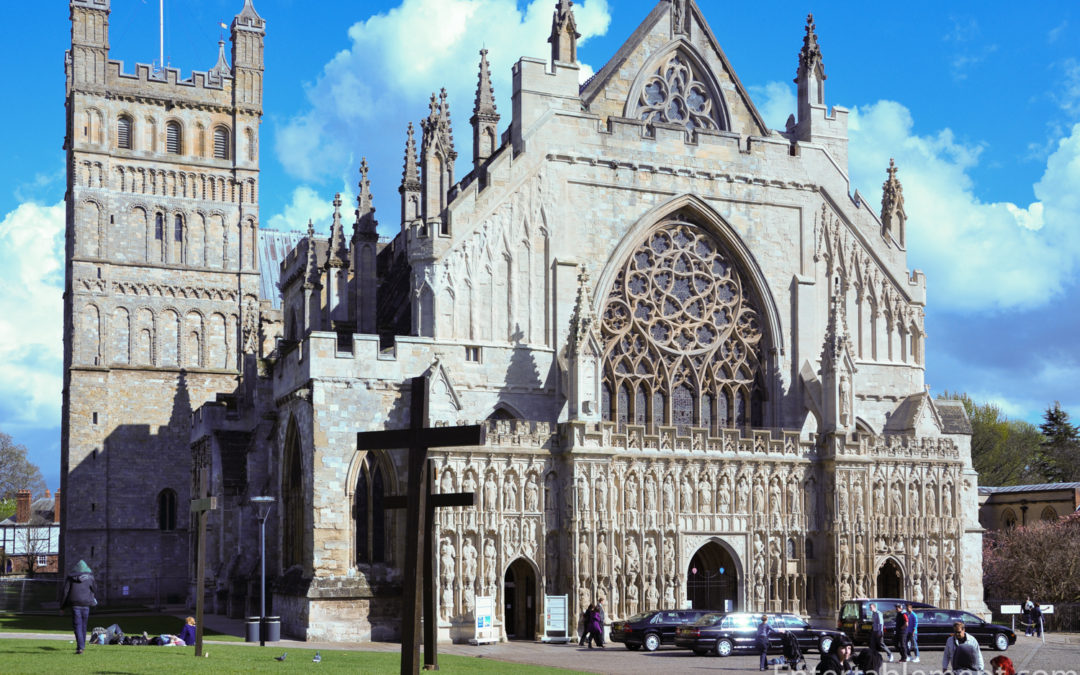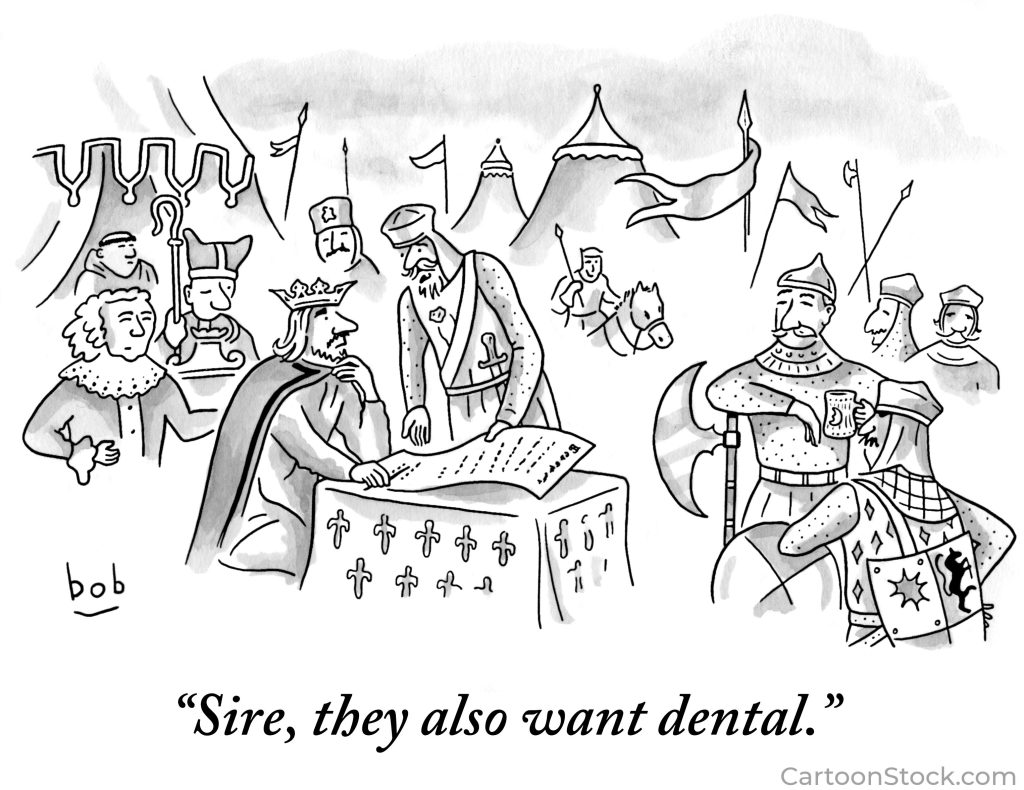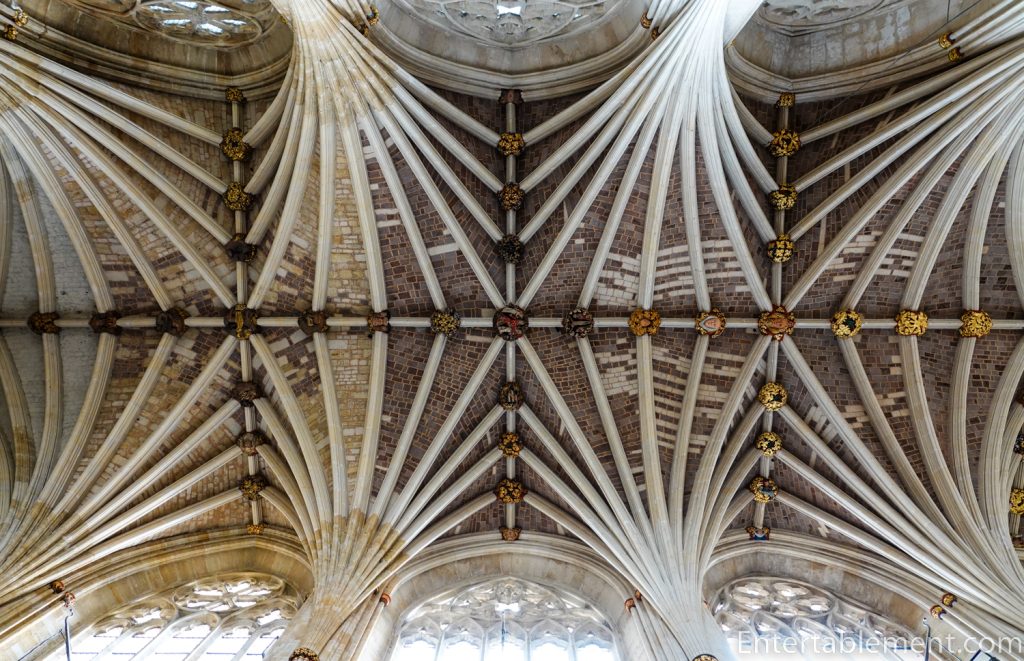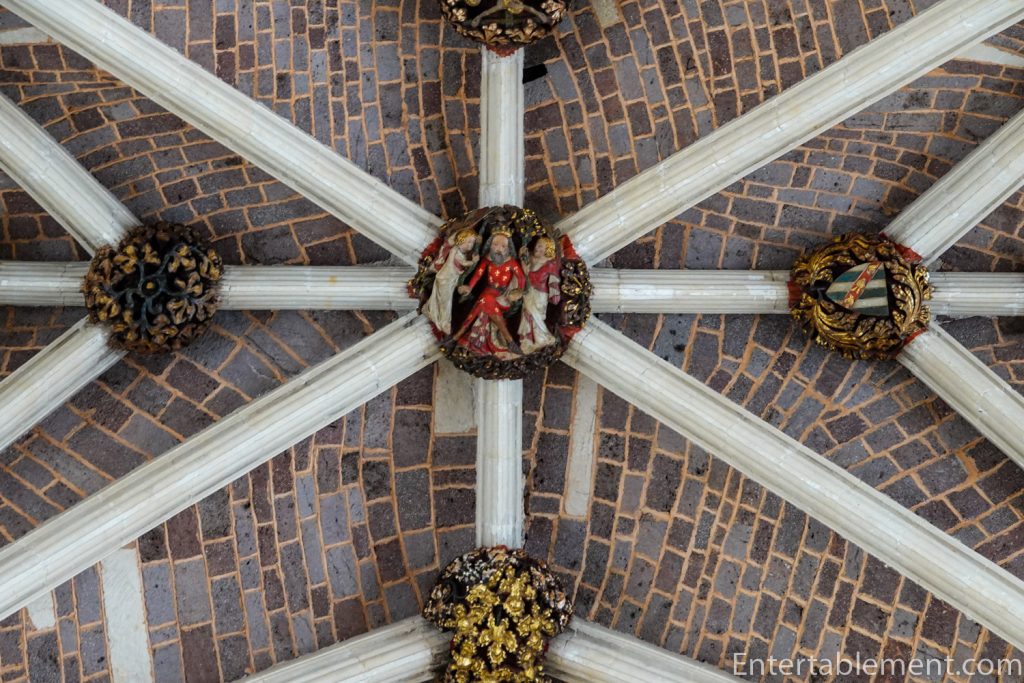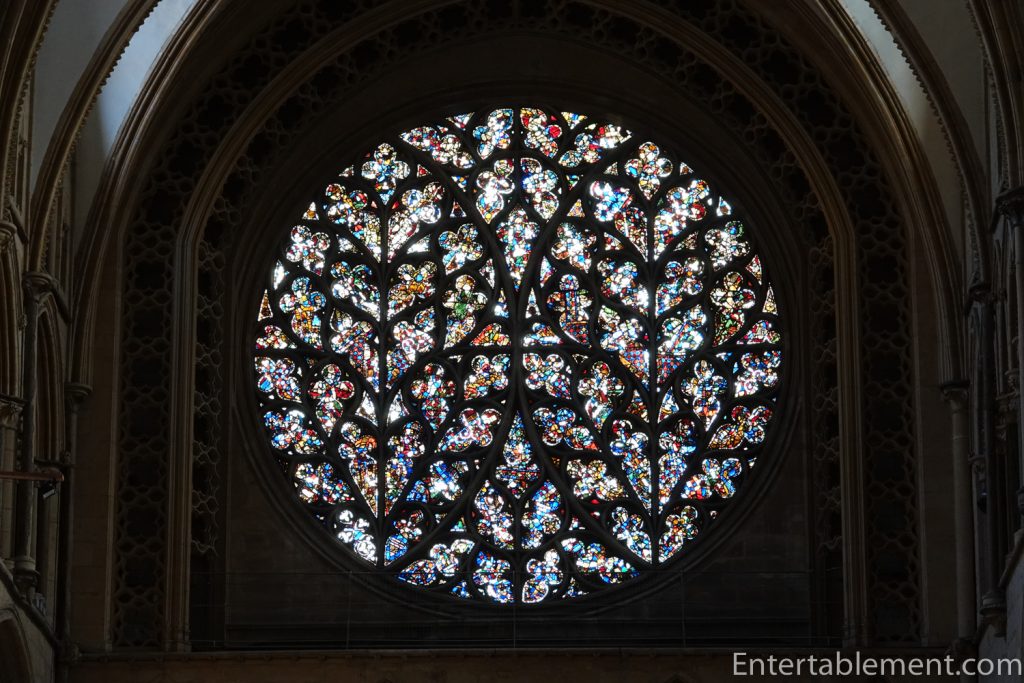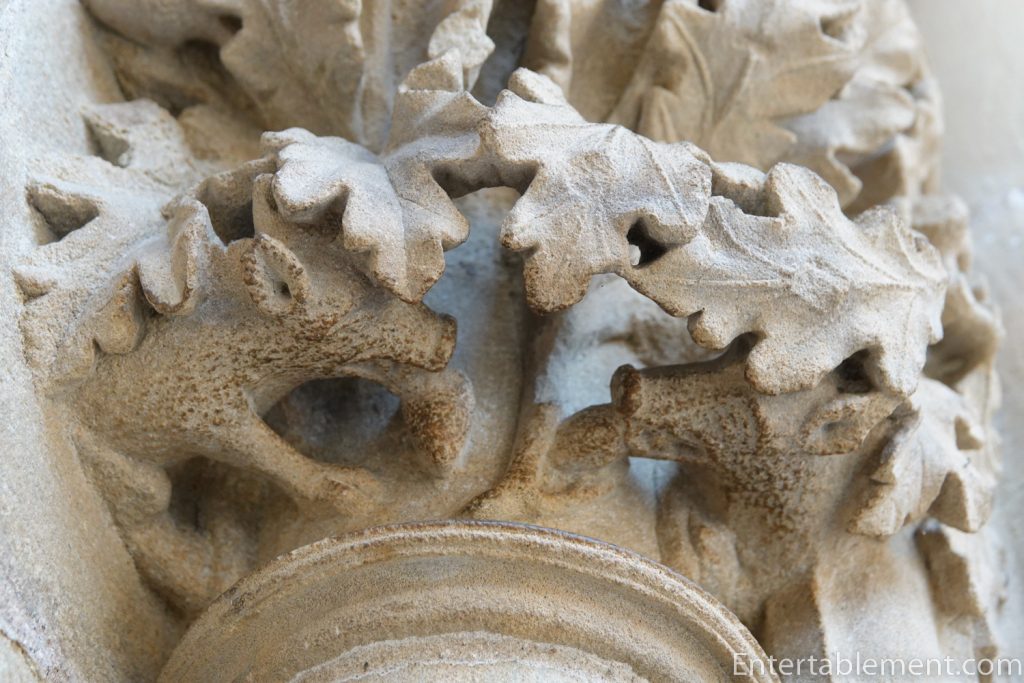Previous Post in the series: Early Gothic Cathedrals
Henry III (1216-1272) was only nine when he became king; by the time he assumed power in his own right in 1227, his regent had soothed the turbulent waters left by his truculent sire, King John, through the acceptance of the Magna Carta. A period of relative peace and prosperity followed, aided by the lucrative export of wool.
Henry III rebuilt Westminster Abbey (likely the most expensive church construction in English history) after 1245 to honour Edward the Confessor. Edward III’s fascination with military chivalry led to cathedrals becoming settings for state ritual and ostentation. Tombs of royal and church celebrities abounded, particularly at Westminster Abbey, which is a veritable jungle of them.

Westminster Abbey Nave
It didn’t stop with Westminster Abbey. Henry III and his wife, Eleanor of Provence, embarked on a vigorous program of cathedral additions and enhancements in the Decorated style, also imported from France.
Complex patterns of stone vaulting reduced the weight (and outward thrust) on the walls; window openings were free to fulfil more decorative functions.

Chapter House, Wells Cathedral
The simple geometric shapes of the Early Gothic period gave way to complex curves— the most obvious is the ogee arch, which combines a convex and a concave curve in the same arch. This double curve became the basis for the curvilinear tracery so popular during the 14th century.
The screen at Lincoln Cathedral is a masterpiece of Decorated Gothic. The four niches on each side and the central arch have ogee arches. The interiors of the eight arches and the surface above the central arch are all covered with a diaper pattern of lobed flowers.
The vaulting of the previous Early Gothic period lightened, with short ribs sprouting from the main ribs to form star-shaped patterns as much ornamental as structural.
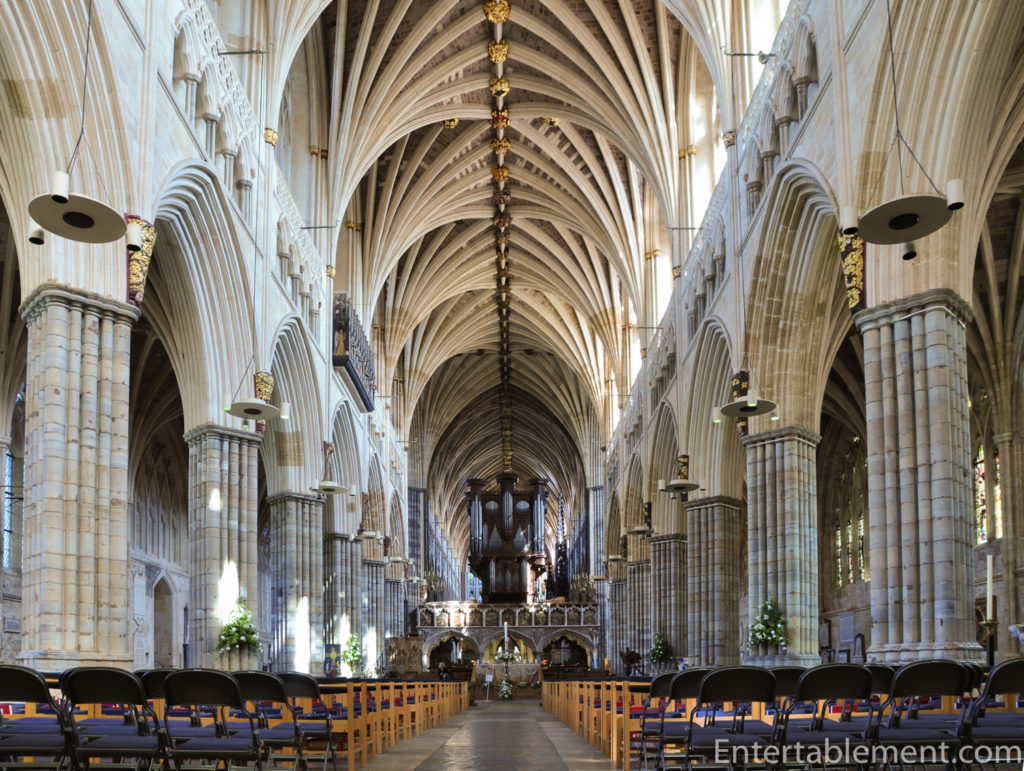
Nave at Exeter Cathedral
The underside of the intersection of the ribs—the keystones—sprouted intricate carvings of faces, biblical scenes and foliage. These bosses, as they are called, look deceptively small, high in the nave ceiling.
But they are huge—nearly 3 feet in diameter.
The widespread adoption of the flying buttress distributed the load of walls and weight of roofs, allowing wider, taller windows.

Flying Buttresses outside Westminster Abbey
As windows grew in size, they become more elaborate, with decorated heads, vertical mullions, and intricate tracery. Fantastic shapes were created, with daggers, tulips and teardrops.
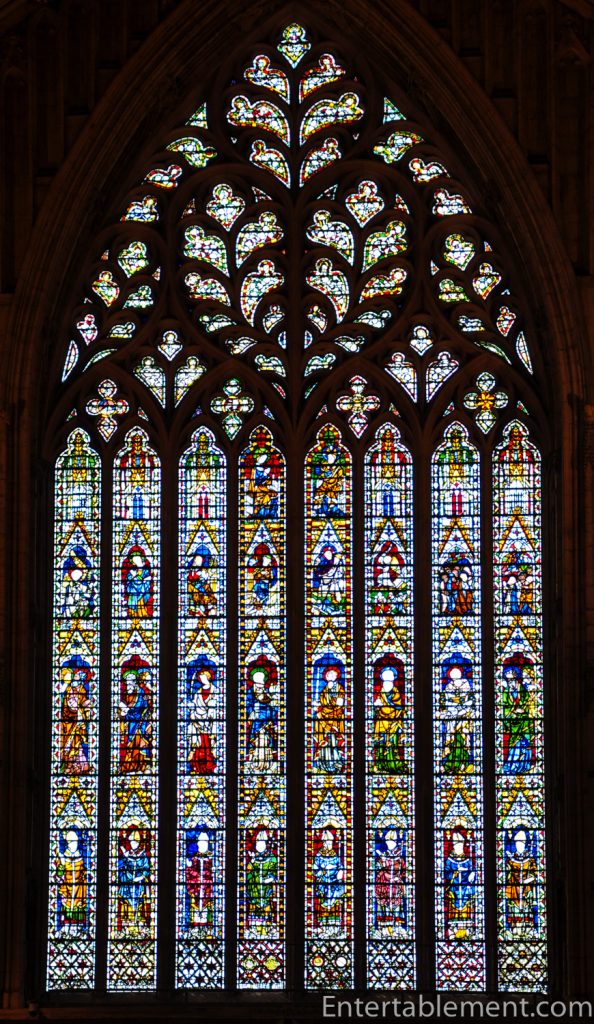
Heart of Yorkshire Window at York Minster
Foliage patterns continued to be a focus, though they became more curvaceous than in the Early Gothic period. A wider variety of leaves were employed, including ivy, oak, rose, and vines. Animals, birds, and human figures are interspersed with foliage, and all the forms are more natural and less stiffly formal. The Chapter House at Southwell Minster is an exemplar of this carving.
A few things conspired to bring this orgy of decorative excess to an end, not the least of which was the Black Death, which ravaged Europe from 1347 to 1353, and in which England lost between an estimated one-third and one-half of its population. Building everywhere came to a screeching halt. Fields were left unploughed, and the people went hungry. A new era of Cathedral construction was at hand, Perpendicular Gothic.

